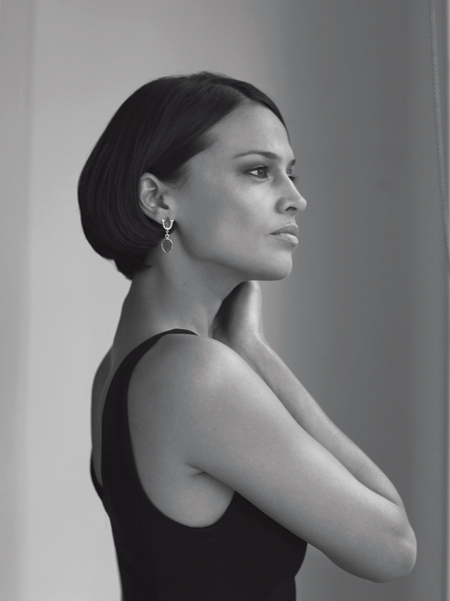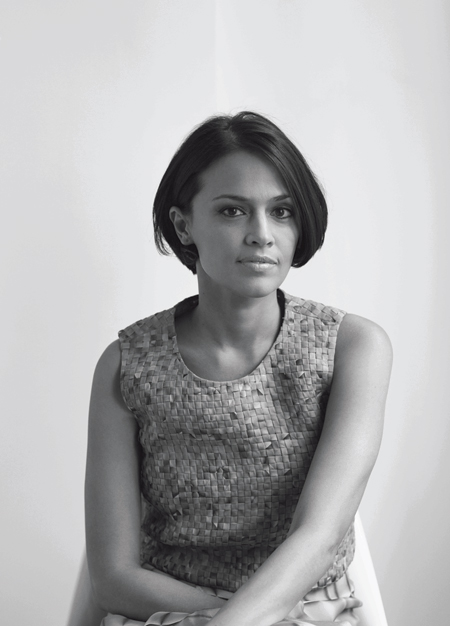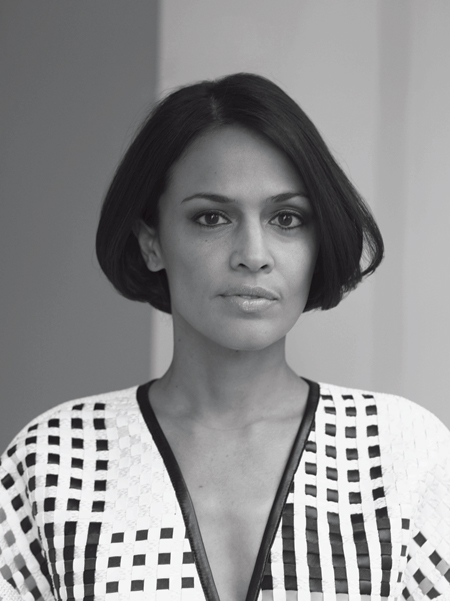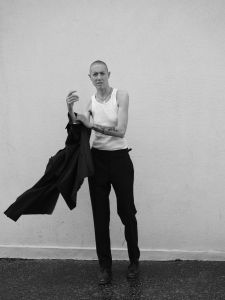Poet, novelist and dancer Tishani Doshi is a woman on a mission to spread the word. She tells Port why it’s verse that really moves us

Photography Laurence Ellis
Styling Alex Petsetakis
Faced with choosing a word to describe Tishani Doshi, you would most likely reach for cosmopolitan, though it doesn’t seem quite accurate enough. She was born in Madras, in 1975, to a Welsh mother and an Indian father; she went to university in the American South, where she experienced a “reverse culture shock”; then holed up in London; and now she lives a relatively reclusive life in between two small fishing villages on the beach in India. “I like being the weirdo writer,” she says with a wry smile. She recalls going to Rhyl, in Wales, for holidays: “… a freezing cold, pebbly beach, and anoraks – I remember thinking this is not my idea of a beach!”
So far, she has a novel, The Pleasure Seekers, to her name – a semi-autobiographical story about a Welsh girl marrying an Indian man – and a collection of poetry, Countries of the Body. Both received critical acclaim. Her interpretation of a “completely strange” story from the Welsh mythic cycle, The Mabinogion, is due out later this year. She is a busy person, it seems, and yet she knows the value of stillness.
I meet her in a house in North London that’s full of noise and movement – she’s just finished the Port photoshoot and she is remarkably composed. Perched on a white sofa, nibbling elegantly at a piece of cake, she only occasionally breaks into movement; though she speaks gently, she has an air of authority.
As a dancer, does she enjoy the performative aspects of poetry readings? (The day after our interview, she’s due to begin a poetry tour; she sees the role of poet as an “evangelical” one.) “I do, I do, it’s part of the duty of the poet to engage your audience – it is important, because poetry is suffering so much.”
What worries her about the state of poetry? “There’s a sense of poetry being old-fashioned, quaint, not very relevant,” she says. “It’s about understanding or having access to it. I go into schools and talk to students, which is great because young kids are excited and curious. If they meet a poet who’s” – she pauses and then says, with emphasis – “alive and young, maybe it’s an incentive to pick up a poem. Everyone has written a poem in their lives.”
Part of Doshi’s typical postcolonial diet included Enid Blyton (“Root beer and roly poly jam,” she recalls, slightly inaccurately). The only poets she was exposed to were “Romantics and daffodils”, which she found “a bit dead, especially from the context I was coming from – we don’t have daffodils”. Only by studying in America did she find “a sense that there are new things to say, and somehow American poetry allowed me that freedom”.
Like her novel, her poetry is very much marked by experience. When I ask if that is what poetry is about, she pauses. “I think it’s about experience and expression, and also about transformation to some degree. So you have the initial trigger for a poem, and in the act of writing you arrive somewhere else. It’s a mysterious thing because you don’t always know where you’re going. There’s always a moment when you think, oh that’s what I mean, that’s what I was trying to say. It’s mostly a surprise, but there’s that real element of transformation. Which is why it remains a very important literary form.”


Doshi is acutely aware of her life as an artist: it’s not at all the same as “… being a banker. It’s not, it just isn’t. If you’re a painter, or in any act of creation… then it’s a kind of lifestyle that requires certain dedication and discipline and vision. And I figured that out only when I was dancing.” Though her family always supported her, it was through her dance teacher, a famous choreographer called Chandralekha, that she began to feel an artist’s life was truly possible. Chandralekha, who died in 2006, was in her seventies when Doshi met her: “I sat in her house for hours every day, there were always people passing through, this grand salon going on. They were artists, very political – I found it quite seductive. I was amazed by the life there.”
So she began to dance. How does that work alongside poetry? I ask. “I’ve thought about it a lot – I’ve been dancing for 10 years. But I’ve been doing it less now , so it’s kind of like the end of my dance career. What’s interesting is not restricting yourself to one particular mode. There’s the sense that if you’re working with words, whether it’s fiction or poetry, you’re working with the body; and on what level do they start to speak or have something to do with each other? And it’s very effortless in some ways, I think.”
While readings involve directly engaging with her audience, writing offers a more reclusive way of life, something she is currently enjoying in India. It sounds idyllic: she gets up with the sun, and “collides” with her husband (an Italian novelist) for mealtimes and discussions about their work. In the afternoon, they relax as the climate dictates – it’s “dead time”, she laughs. She writes poetry by hand: “I’m very reluctant to go straight to a computer. But I always feel like the handwritten is the most natural because you have this flow. With the computer it’s almost too permanent too quickly – I don’t trust it.” There is silence, too, in her house by the sea, of a kind impossible to find in an Indian city.
It’s a silence that breeds inspiration for poetry, which is, for Doshi “… the most basic of things, actually. I think I’ve found a great power in poetry that I don’t find in other things. It’s just the sense of a pure form and it’s mysterious, like I don’t know exactly what makes a poem a poem – why is it not something else, why is it not cut-up prose? It’s just arranging words on a page differently… and it’s to do with that primal sound, with the beat, with the metre. There’s something very old about it.
“I think when you read a wonderful poem, when it starts, by the end of it you’ve moved so far – and you think how did you move me so far in so few words? And that’s what I find very powerful about it, because in a novel you can do the same thing, but you have to go through 100,000 words for that, and it’s great, because there’s all this time, but with a poem you do it so quickly and it’s amazing.”
So is there hope for poetry? She smiles and raises her stylish head: “It’s just a question of finding a way to make it relevant, and that’s what poets should try to do.” She places her hands on her knees and fixes me with an intense stare. “Hope is not lost.”
Make-up Liz Daxauer at Caren using NARS
Styling assistant Julia Leinweber




